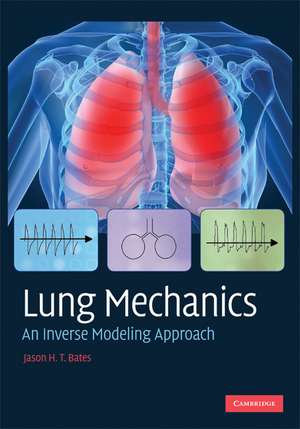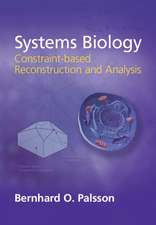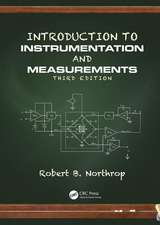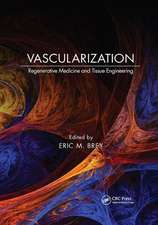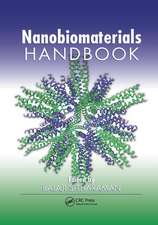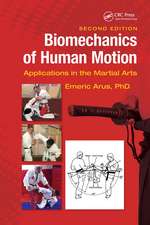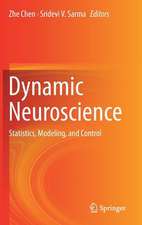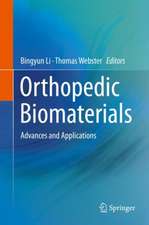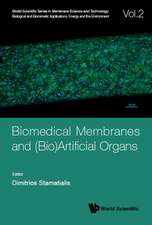Lung Mechanics: An Inverse Modeling Approach
Autor Jason H. T. Batesen Limba Engleză Hardback – 29 iul 2009
Preț: 768.71 lei
Preț vechi: 809.16 lei
-5% Nou
Puncte Express: 1153
Preț estimativ în valută:
147.11€ • 159.74$ • 123.57£
147.11€ • 159.74$ • 123.57£
Carte tipărită la comandă
Livrare economică 22 aprilie-06 mai
Preluare comenzi: 021 569.72.76
Specificații
ISBN-13: 9780521509602
ISBN-10: 0521509602
Pagini: 236
Dimensiuni: 180 x 253 x 15 mm
Greutate: 0.62 kg
Ediția:New.
Editura: Cambridge University Press
Colecția Cambridge University Press
Locul publicării:Cambridge, United Kingdom
ISBN-10: 0521509602
Pagini: 236
Dimensiuni: 180 x 253 x 15 mm
Greutate: 0.62 kg
Ediția:New.
Editura: Cambridge University Press
Colecția Cambridge University Press
Locul publicării:Cambridge, United Kingdom
Cuprins
Preface; Notation; 1. Introduction; 2. Collecting data; 3. The linear single-compartment model; 4. Resistance and elastance; 5. Nonlinear single-compartment models; 6. Flow limitation; 7. Linear two-compartment models; 8. The general linear model; 9. Inverse models of lung impedance; 10. Constant phase model of impedance; 11. Nonlinear dynamic models; 12. Epilogue; References; Index.
Recenzii
'In a clearly written language, Jason Bates provides a grand tour into the frontiers of the bioengineering of lung mechanics and physiology. The reader is elegantly led through the intricacy and beauty of forward and inverse modeling applied to the lung with plenty of examples for the physiologist, problems for the teacher, insight for the scientist and even some food for the philosophically oriented.' Bela Suki, Boston University
'This book aims to provide physiologists and medical professionals interested in lung mechanics an understanding of the mathematics behind modeling. In my view, Jason Bates has succeeded. While the depth of the mathematics may be daunting, the explanations are clear and Jason takes the readers by the hand and leads them gently through the maze, arriving on the other side enlightened! No where is this more obvious than I the chapter on the derivation of the constant phase model and hysteresivity. These have become family names to modern respiratory physiologists; however, I would venture that the majority who use them do not understand them. Reading Jason's book allows a much greater understanding of these and other common concepts in modeling the mechanical behaviour of the lungs. I recommend this to all currently in the field and those wanting to enter. Well done!' Peter Sly, Telethon Institute for Child Health Research
'This is a very well-written book which fulfills a major need for a thorough and quantitative analysis of respiratory mechanics. Moreover, Dr Bates does a superb job at simplifying rigorous applied mathematical theory such that practicing clinicians and life scientists with little to no mathematical training can be proficient in concepts that have traditionally been the domain of graduate-level engineers and physicists.' David W. Kaczka, Johns Hopkins University
'This long-needed textbook identifies and then bridges the gap between the classical views on lung mechanics and the experimental evidence; an enormous help for students and a valuable teaching resource for lecturers and senior researchers.' Zoltán Hantos, University of Szeged, Hungary
'This book aims to provide physiologists and medical professionals interested in lung mechanics an understanding of the mathematics behind modeling. In my view, Jason Bates has succeeded. While the depth of the mathematics may be daunting, the explanations are clear and Jason takes the readers by the hand and leads them gently through the maze, arriving on the other side enlightened! No where is this more obvious than I the chapter on the derivation of the constant phase model and hysteresivity. These have become family names to modern respiratory physiologists; however, I would venture that the majority who use them do not understand them. Reading Jason's book allows a much greater understanding of these and other common concepts in modeling the mechanical behaviour of the lungs. I recommend this to all currently in the field and those wanting to enter. Well done!' Peter Sly, Telethon Institute for Child Health Research
'This is a very well-written book which fulfills a major need for a thorough and quantitative analysis of respiratory mechanics. Moreover, Dr Bates does a superb job at simplifying rigorous applied mathematical theory such that practicing clinicians and life scientists with little to no mathematical training can be proficient in concepts that have traditionally been the domain of graduate-level engineers and physicists.' David W. Kaczka, Johns Hopkins University
'This long-needed textbook identifies and then bridges the gap between the classical views on lung mechanics and the experimental evidence; an enormous help for students and a valuable teaching resource for lecturers and senior researchers.' Zoltán Hantos, University of Szeged, Hungary
Descriere
A modern quantitative study of lung mechanics, relating mathematical modeling and engineering principles to lung function, structure, mechanics, and disease.
